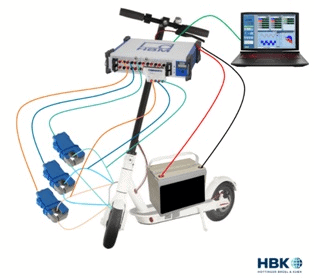

arrow_back_ios
See All Produtos See All Conhecimento See All Soluções See All Serviços e Suporte See All Sobre Main Menu
arrow_back_ios
See All Software See All Instrumentos See All Transdutores See All Teste de vibração See All Eletroacústica See All Sistemas de teste acústico de fim de linha See All Academia See All Aplicações See All Indústrias Main Menu
arrow_back_ios
See All Simulação e Análise See All DAQ See All Drivers API See All Utilitário See All Controle de vibração See All Calibração See All DAQ See All Portátil See All Industrial See All Analisadores de potência See All Condicionadores de sinal See All Acústica See All Tensão e Corrente See All Deslocamento See All Força See All Células de carga See All Multicomponente See All Pressão See All Deformação See All Strain Gauges See All Temperatura See All Inclinação See All Torque See All Vibração See All Acessórios See All Controladores See All Excitadores de medição See All Excitadores modais See All Amplificadores de potência See All Sistemas Shaker See All Soluções de teste See All Atuadores See All Motores de combustão See All Durabilidade See All eDrive See All Sensores de teste de produção See All Caixas de transmissão See All Turbo Charger See All Cursos de formação See All Acústica See All Monitorização de activos e processos See All Energia eléctrica See All Sensores personalizados See All NVH See All Sensores personalizados do OEM See All Vibração See All Integridade estrutural See All Transporte automotivo e terrestre Main Menu
arrow_back_ios
See All nCode - Análise de Durabilidade e Fadiga See All ReliaSoft - Análise e gerenciamento de confiabilidade See All API See All Ruído do produto See All Ruído de passagem de veículos See All Electroacoustics See All Identificação da fonte de ruído See All Ruído ambiental See All O que é potência sonora e pressão sonora See All Certificação de ruído See All Teste de produção e garantia de qualidade See All Análise e Diagnóstico de Máquinas See All Monitoramento de integridade estrutural See All Teste de bateria See All Introdução à Medição de Energia Elétrica Durante Transitórios See All Diagrama de circuito equivalente do transformador | HBM See All Sensores OEM para a indústria agrícola See All Sensores OEM para aplicações robóticas e de torque See All Dinâmica estrutural See All Ensaio das propriedades dos materiais Main Menu
- Perguntas
- Holografia acústica
- Variação acústica subaquática
- Teste acústico de túnel de vento – Aerospace
- Ensaios em túnel de vento para automóveis
- Beamforming
- Identificação da fonte de ruído
- Identificação de fontes de ruído em tempo real com câmara acústica
- Medidores de intensidade sonora
- Formação de feixe esférico
- PRODUCT NOISE
- Monitoramento de túneis com sensores Fiber Bragg
- Soluções de monitoramento para infraestruturas civis
- Soluções de monitoramento para turbinas eólicas
- Soluções de monitorização para a indústria do petróleo e do gás
- Soluções de monitoramento para ferrovias
- Soluções de monitoramento para engenharia civil
- Serviços de monitoramento disponíveis
- Monitorização de fundações utilizando extensómetros





